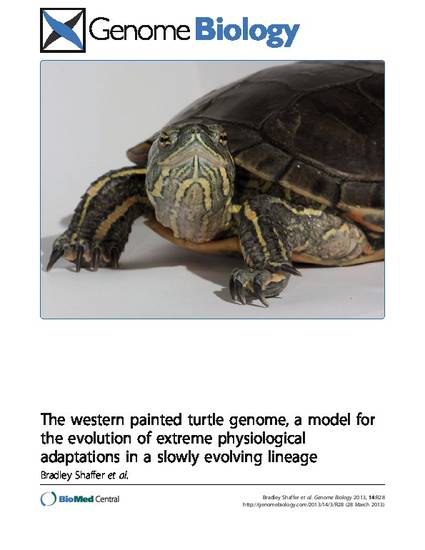
Abstract Background: We describe the genome of the western painted turtle, Chrysemys picta bellii, one of the most widespread, abundant, and well-studied turtles. We place the genome into a comparative evolutionary context, and focus on genomic features associated with tooth loss, immune function, longevity, sex differentiation and determination, and the species’ physiological capacities to withstand extreme anoxia and tissue freezing. Results: Our phylogenetic analyses confirm that turtles are the sister group to living archosaurs, and demonstrate an extraordinarily slow rate of sequence evolution in the painted turtle. The ability of the painted turtle to withstand complete anoxia and partial freezing appears to be associated with common vertebrate gene networks, and we identify candidate genes for future functional analyses. Tooth loss shares a common pattern of pseudogenization and degradation of tooth-specific genes with birds, although the rate of accumulation of mutations is much slower in the painted turtle. Genes associated with sex differentiation generally reflect phylogeny rather than convergence in sex determination functionality. Among gene families that demonstrate exceptional expansions or show signatures of strong natural selection, immune function and musculoskeletal patterning genes are consistently over-represented. Conclusions: Our comparative genomic analyses indicate that common vertebrate regulatory networks, some of which have analogs in human diseases, are often involved in the western painted turtle’s extraordinary physiological capacities. As these regulatory pathways are analyzed at the functional level, the painted turtle may offer important insights into the management of a number of human health disorders. Keywords: Amniote phylogeny, anoxia tolerance, chelonian, freeze tolerance, genomics, longevity, phylogenomics, physiology, turtle, evolutionary rates
Available at: http://works.bepress.com/fredric-janzen/5/

This is an article from Genome Biology 14 (2013): 1, doi:10.1186/gb-2013-14-3-r28. Posted with permission.